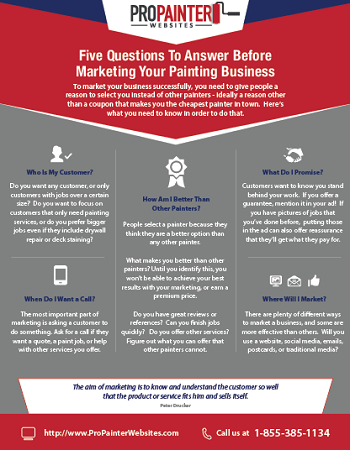Below The Surface Of Your Commercial External Paint Task Exists The Essential Duty Of Weather-- Find How It Can Make Or Damage Your Outcomes
Below The Surface Of Your Commercial External Paint Task Exists The Essential Duty Of Weather-- Find How It Can Make Or Damage Your Outcomes
Blog Article
Post Created By-Fabricius Kofoed
When you're intending an industrial outside painting project, don't take too lightly the effect of weather condition on your results. You require to take into consideration factors like temperature level, moisture, and rainfall, as they can make or break your paint job. For example, did you understand that optimal problems require certain temperature level varieties and humidity levels? Falling short to keep track of these elements can bring about irregular surfaces or perhaps damages to fresh paint. Understanding these elements is key to attaining a long-lasting, expert end result. So, what certain weather conditions should you watch out for?
Temperature level Considerations
When it involves industrial external paint, temperature plays a crucial duty in the outcome of your project. If you're painting in extreme heat, the paint can dry out as well swiftly, leading to problems like bad attachment and irregular coatings. You intend to aim for temperature levels in between 50 ° F and 85 ° F for the best results. Listed below 50 ° F, paint may not cure appropriately, while over 85 ° F, you run the risk of blistering and fracturing.
Timing your job with the right temperature levels is crucial. Begin your work early in the morning or later in the mid-day when it's cooler, specifically throughout warm months.
Also, think about the surface temperature; it can be considerably higher than the air temperature level, particularly on warm days. Use a surface area thermostat to inspect this prior to you start.
If temperatures are unpredictable, keep an eye on the weather report. residential painter portland or heat waves can hinder your strategies. You don't wish to begin painting only to have the problems transform mid-project.
Moisture Levels
Moisture levels dramatically impact the success of your commercial outside paint job. When the humidity is expensive, it can hinder paint drying out and treating, leading to a series of problems like poor adhesion and end up quality.
If you're planning a work during wet problems, you might find that the paint takes longer to dry, which can extend your project timeline and rise costs.
Alternatively, reduced humidity can also position obstacles. Paint may dry also rapidly, preventing appropriate application and leading to an unequal finish.
You'll want to keep an eye on the moisture levels very closely to ensure you're functioning within the excellent range, normally in between 40% and 70%.
To get the very best outcomes, take into consideration utilizing a hygrometer to determine humidity prior to starting your project.
If you locate the degrees are outside the ideal variety, you may require to change your timetable or choose paints designed for variable conditions.
Constantly seek advice from the maker's standards for specific referrals on moisture resistance.
Rainfall Influence
Rainfall or snow can substantially disrupt your industrial outside paint plans. When rainfall takes place, it can get rid of freshly applied paint or create an irregular coating. Ideally, you intend to choose days with completely dry weather to make sure the paint adheres effectively and treatments properly. If you're captured in a rain shower, it's finest to halt the job and wait for problems to boost.
Moreover, snow can be much more destructive. straight from the source does it produce a wet surface area, yet it can also lower temperature levels, making it tough for paint to dry. This can cause concerns like peeling or blistering down the line.
It's critical to inspect the weather forecast before starting your job. If rain or snow is anticipated, think about rescheduling.
Always remember to enable ample drying out time between layers, specifically if the weather continues to be uncertain.
Final thought
Finally, watching on the climate is necessary for an effective industrial external paint job. By keeping track of temperature level, humidity, and precipitation, you can guarantee the best conditions for application and healing. Bear in mind to intend your job around beneficial climate and constantly adhere to maker standards. With the appropriate approach, you'll attain a resilient, lovely surface that can endure the elements. Don't let the weather catch you off guard-- remain educated and paint smart!
